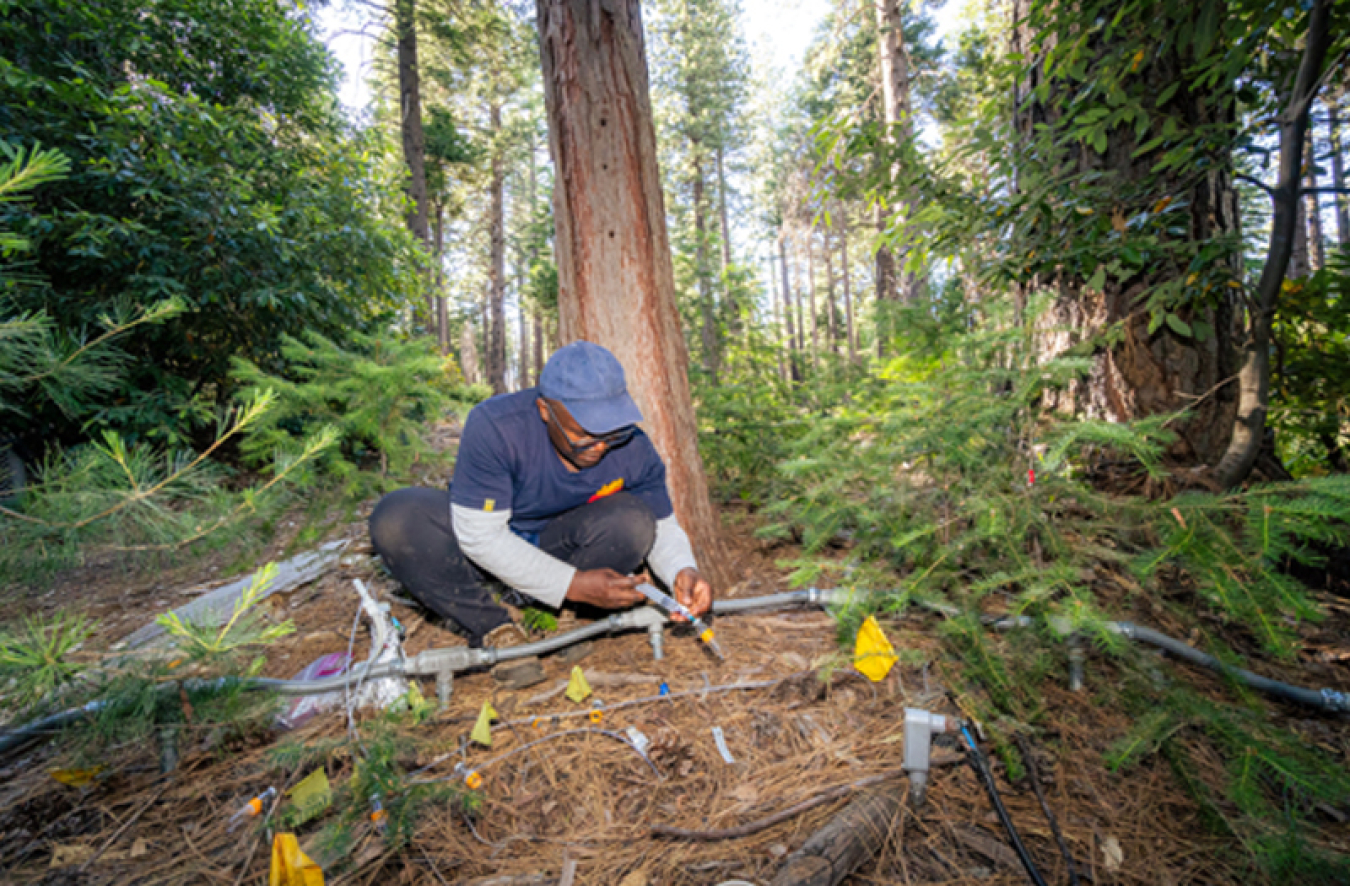Researchers work in the mountains and at the seashore to study how warmer temperatures impact the ability of deep subsoils to store carbon.
August 22, 2024
Researchers are digging deep to understand the negative effects a warming world could have on the ground beneath our feet. That’s important because soil stores a lot of carbon, contributing to a healthier planet.
What they’re finding out, thanks to innovative experiments in California, is that increasingly warmer temperatures may cause carbon to be released from soil at higher rates. And that could be a big problem.
Soil is key to processing carbon. In fact, planet Earth stores three times as much carbon in soil as it does in the atmosphere. That soil is working hard for the planet, keeping the atmosphere clean by pulling out carbon and storing it deep underground in a natural process that has taken place for millions of years.
As demands for new croplands and timber continue to rise, research is showing that disturbing the natural environment comes at a price. Emissions from deforestation and agriculture account for about a fifth of all global greenhouse gases, according to the United Nations Intergovernmental Panel on Climate Change.
As the climate warms, what is happening to the soil microbes deep underground? Will the ground beneath our feet continue to store carbon efficiently? Or will the rising temperatures have a negative effect on that process?
Researchers from the Department of Energy’s (DOE) Lawrence Berkeley National Laboratory (Berkeley Lab) are investigating how warmer temperatures impact the ability of deep subsoils to store carbon. To look at how warming affects deep soils specifically, the team has been artificially heating plots of soil over several years in the Sierra Nevada mountains and now are starting an additional new grassland experiment site at Point Reyes National Seashore.
“Understanding how warming affects soil organic carbon, particularly across the entire soil profile, is crucial for assessing its response and feedback to climate warming,” said Steve Kwatcho Kengdo, a postdoctoral researcher in Berkeley Lab’s Climate and Ecosystem Sciences Division. Kengdo has worked in ecosystems from mangroves and tropical forests in Central Africa to Alpine grasslands and temperate forests in Central Europe and now California.
The innovative research is carried out by the Belowground Biogeochemistry Science Focus Area, one of the DOE’s Science Focus Areas. The work is essential to figuring out what happens to critical ecosystem services, such as soil carbon cycling, as a changing climate exacerbates natural disasters such as flooding, drought, heat waves, and wildfires.
It’s too soon to draw conclusions about recommendations for land management at this stage of the research. But insights gleaned from these extensive studies could help society and resource managers steward the soil in agriculture and managed forests in the future.
The Department of Energy Office of Science, Office of Biological and Environmental Research funded this work.

